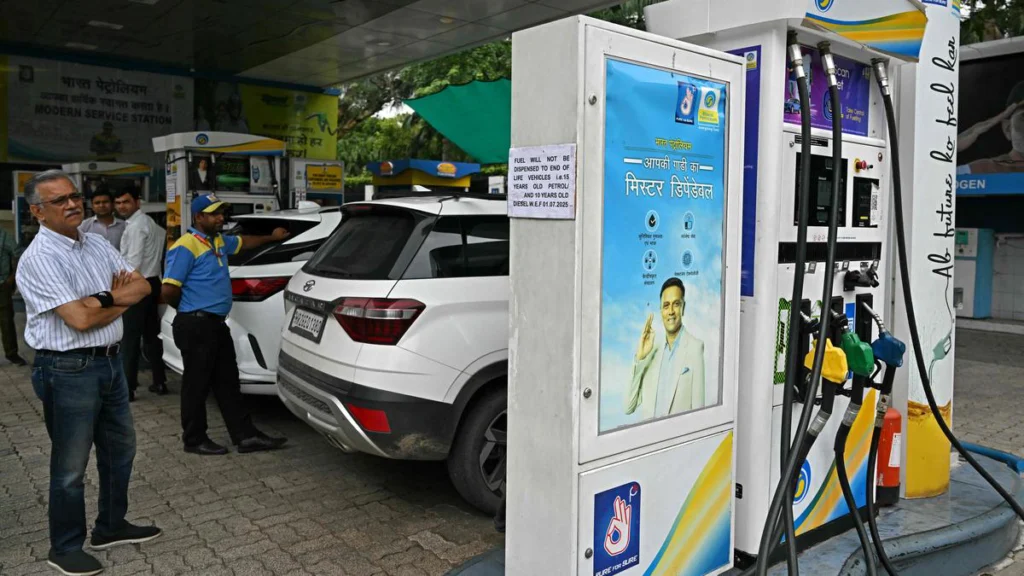Delhi government says it won’t scrap old vehicles; cites public backlash, systemic challenges

Delhi Government Refuses to Scrap Old Vehicles Despite Pollution Concerns
In a significant move, the Delhi government announced it would not scrap old vehicles, despite growing pollution concerns. The decision comes after much deliberation. Environment Minister Manjinder Singh Sirsa explained that the government would not ban all old vehicles. Instead, it would focus on the actual pollution emitted by them.
Delhi has struggled with severe air pollution for years. The city frequently experiences high levels of particulate matter, especially during winter. Vehicle emissions are one of the main contributors to this pollution. Older vehicles, with outdated engines and emission systems, are significant culprits. However, scrapping them has sparked opposition. Many argue that it would hurt drivers who rely on these vehicles for work.
The Challenge of Air Pollution
The capital’s air quality often reaches hazardous levels, impacting public health. Vehicles, especially older ones, contribute heavily to this pollution. They emit high amounts of carbon and other harmful particles. Despite several initiatives, the pollution problem has persisted. Experts have pointed out that older vehicles, particularly those with poor maintenance, add significantly to the toxic air.
But scrapping all such vehicles is not an easy task. The government faces widespread opposition to this idea. Many people depend on older vehicles for their livelihoods. Small transport operators, delivery services, and individuals who cannot afford newer models would be hit hardest. Thus, the Delhi government had to reconsider the blanket ban.
Public Backlash and Systemic Challenges
The public backlash against scrapping old vehicles has been strong. Many people argue that the decision would impact their livelihoods. Vehicle owners, especially in lower-income groups, often cannot afford to buy new, cleaner vehicles. The economic consequences would be severe for them.
Additionally, the systemic challenges of scrapping old vehicles are significant. Delhi has thousands of old vehicles, many of which are not properly registered. Without a proper tracking system, it becomes difficult to determine which vehicles need to be removed. The logistics of impounding and disposing of so many vehicles are also complicated. The government’s infrastructure cannot support such a large-scale initiative.
A More Targeted Approach: Focusing on Pollution
Given these challenges, the Delhi government has chosen to focus on emissions rather than vehicle age. Minister Sirsa stated that the government would look at the pollution levels each vehicle generates. Those that fail to meet the emission standards would face penalties. This approach targets polluting vehicles directly, regardless of their age.
The government plans to implement stricter emission tests. Vehicles that fail these tests will either face fines or be taken off the roads temporarily. This strategy aims to ensure that only high-polluting vehicles are removed, without affecting those that are still in good working condition. The focus is on reducing harmful emissions rather than simply removing older vehicles.
In addition to this, the Delhi government is also focusing on promoting cleaner alternatives. One major initiative is the push for electric vehicles (EVs). By providing incentives such as subsidies, the government hopes to increase the adoption of EVs. This would significantly reduce pollution while helping citizens transition to cleaner modes of transport.
The Role of Public Transport
The Delhi government is also working to improve public transport. More eco-friendly buses are being introduced, alongside expansions in metro services. By providing better, cleaner public transport options, the government hopes to reduce the number of private vehicles on the road. This will decrease pollution levels in the city overall.
Moreover, efforts are being made to ensure better regulation of vehicle emissions. Authorities are increasing enforcement of laws requiring vehicles to meet pollution control standards. With stricter monitoring, the government hopes to reduce the total pollution generated by vehicles in the city.
Collaboration with the Public
While the government has outlined its plans, it acknowledges that the public’s cooperation is essential. Environmental awareness campaigns will be launched to educate people on the importance of reducing vehicle emissions. The government hopes to engage citizens in reducing pollution through small, collective actions.
Furthermore, industries and businesses will be encouraged to adopt green technologies. In fact, many businesses can significantly reduce their carbon footprint by switching to cleaner, more efficient vehicles. The government will provide support to help them make this transition.
Conclusion: A Balanced Approach to Air Quality
In conclusion, the Delhi government’s decision to not scrap all old vehicles is a balanced response to the challenges the city faces in tackling pollution. While air quality remains a significant issue, scrapping all old vehicles would have had negative economic consequences. Instead, the government is adopting a more targeted approach, focusing on the actual pollution emitted by vehicles.
This policy change highlights the government’s recognition of the need to balance environmental goals with practical challenges. By focusing on high-emission vehicles and promoting electric transportation, Delhi can make strides in improving its air quality without causing undue hardship to its residents. The government’s plan, which also includes enhancing public transportation, offers a long-term solution to air pollution. With continued public awareness and collaboration, the city can work toward cleaner air and a healthier future.






